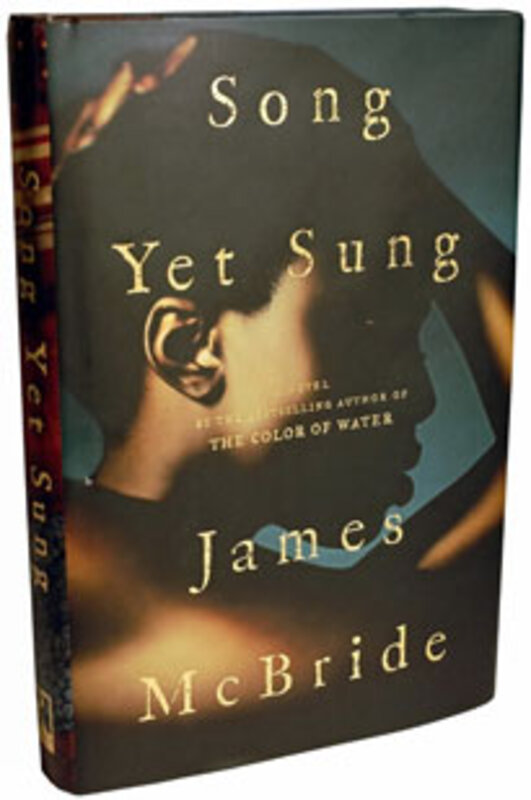In pursuit of a higher form of freedom
Loading...
Dreams are sometimes what people retreat to when the reality before their eyes is too horrible to accept as the truth. It’s no wonder, then, that a dreamer is at the heart of James McBride’s spellbinding new novel Song Yet Sung.
This is a story of American slavery, but not one scene is spent on a Southern plantation with stereotypes of cruel white masters and cowering black slaves.
Instead, Liz Spocott is a wounded runaway slave who has already fled the plantation – only to find herself confounded by troubling visions of the future. She has been captured by a slave trader and chained up along with 14 other runaways in an attic. There, in whispers under the eaves, Liz learns about “the code” – a cryptic means of communication for slaves on the run – from an old woman “with no name.” In turn, Liz shares her strange dreams. To her fellow inmates, she becomes the Dreamer.
Led in a revolt by Liz, the prisoners kill their black guard and spring free. Two die, six are recaptured, and four, plus Liz, vanish into the Maryland woods 80 miles from freedom’s line.
Thus, tales of the strange and beautiful young woman who has future sight and magical powers spreads among the black community and it seems the whole world starts looking for her. Her master, Captain Spocott, who wants his “cuddle-pillow” back, sends a man to convince legendary slave-tracker Denwood Long to set down his fishing nets and come out of retirement to find Liz.
Patty Cannon, the slave trader, and her posse of a few ruffian white men and black men (used as decoys) are also in hot pursuit – driven by revenge and greed for the bounty on Liz’s head.
Amber, a male slave of a young widow, meets Liz by chance and keeps her hidden in the hollow of an old tree. Captivated by her beauty and the recounting of her dreams, Amber falls in love.
The novel’s action mostly takes place on the outskirts of civilization where racial lines of segregation and power are muddied: not all blacks behave as brothers, there appears to be a real sense of family between Amber and his owner, and the gimpy Denwood shows fissures of warmth in his cold, stone center. In the woods, every main character has moments of violent dominance and withering defeat. Adding to the drama, a small white boy and a small black boy vanish, and in the scramble to find them everyone must figure out if they should trust the color of their skin or the love in their hearts.
It’s this common core of unpredictable human behavior, not entirely good and not entirely evil, that pulses through “Song Yet Sung.”
McBride spins his tale out of a few historical facts: Patty Cannon was a real slave-trader, and the Dreamer was inspired by Harriet “Moses” Tubman, who also claimed to have instructive dreams. The novel’s setting in Dorchester County, Md., where free blacks lived alongside enslaved blacks and where the Maryland watermen battled Virginia watermen over oysters in Chesapeake Bay, adds a natural tension.
In one scuffle, Liz’s tracker Denwood fights a black man who has lived most of his life in the woods, not a slave but not completely free.
“Denwood felt as if he were wrestling the entire eastern shore and slavery itself, boiled into the broth of this man’s ... steel-like arms, which gripped him with a cold-bloodedness he’d never known before, equal, he guessed to his own when he, too, was a slave: to money, to power, to drink, and to the ideas of others more powerful than he was.”
In a sense, “Song Yet Sung” combines the mythology of an August Wilson script with the topsy-turvy world of Shakespeare’s “A Midsummer Night’s Dream.” Everyone is running for something in the thicket and no one seems to be getting anywhere, except Liz. And she’s not convinced escaping to the North will solve her problems.
Liz’s future dreams will not be unfamiliar to the modern reader, dreams “of young black men in great cities who shot one another from horseless carriages, and of fat children who cried of starvation and ran from books like they were poison.”
It isn’t hard to decipher McBride’s code that slavery persists in many forms. Although his characters live side by side there is no open trust, the firm imprint of an economy where families were torn apart with the fall of an auctioneer’s mallet.
But human nature yearns to trust, which is why “the code,” the language of the “gospel train” used by slaves to escape to the North, emerges as a powerful, silent player. Once a person shows he or she knows its meaning the wheels of the freedom train begin to turn.
Few actually find freedom in this tale. And with that, McBride implies that our work is left undone, we all have yet to find it in ourselves to trust and truly be free.





